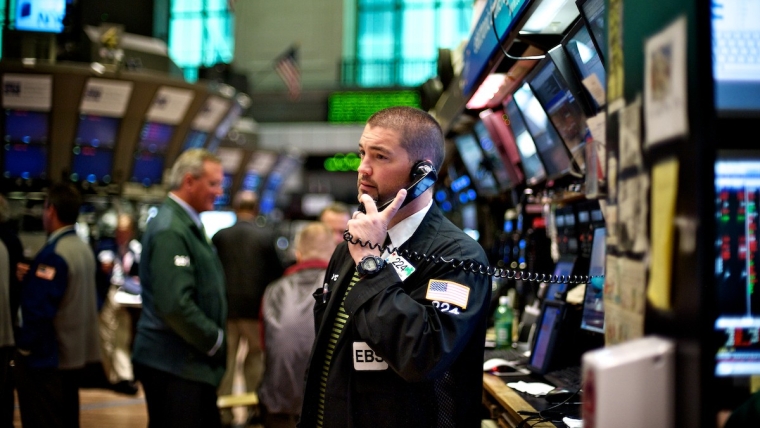
Russia-Ukraine tensions remain the market’s focus at present, driving continued volatility in bonds and equities. The S&P500 is down around 1% and the US 10-year rate has dropped back below 2% after Biden warned an invasion could happened in the next few days. Currencies have been less affected and indeed the NZD is stronger over the past 24 hours, now trading around 0.67.
Russia-Ukraine headlines continue to buffet markets. Yesterday afternoon saw broad-based risk-off moves after Russian media reported that Ukrainian government forces had fired mortar shells on Russian separatists in the disputed Donbas region of Eastern Ukraine. Risk assets have come under further pressure overnight after Biden said he believed there was a “very high” probability of an invasion, which he said could happen in the next “several days”, and accused Russia of setting up a so-called “false flag” operation as a pretext for war. Russia continues to dispute claims that it is planning an invasion and has accused the US (and others) of “hysteria ”. Meanwhile, Russia alleged to the UN that Ukraine had committed war crimes in the disputed Eastern regions on the country. US Secretary of State Blinken has proposed a meeting with Russian Foreign Minister Lavrov in Europe next week although hopes of a diplomatic solution appear to be fading.
Markets have been very volatile over the past 24 hours. Bond yields have traded very wide ranges overnight, with the US 10-year rate yoyoing between 1.95% and 2.03%. As we go to print, the 10-year rate is currently trading towards the lower end of that range, down 6bps at 1.98%. Equities are down across both the US and Europe, with the S&P500 down by 1.2% and the NASDAQ 1.7% lower.
Currencies moves have been less notable than those in bond and equity markets. After spiking higher yesterday afternoon after Russian media reports of Ukrainian troops firing on Russian separatists, the BBDXY USD index is back to unchanged on the day. Safe haven currencies have outperformed, with the JPY and CHF up by 0.2% to 0.3% over the past 24 hours. Despite risk appetite turning more cautious overnight, the NZD is also towards the top of the currency leader board. The NZD is up by around 0.4% from this time yesterday and is trading around 0.67 while the NZD/AUD cross has recovered to above 0.93.
The market has slightly scaled back the probability of a 50bps Fed hike next month, to around 40%. Besides investor nerves around a possible Russia-Ukraine conflict, Fed expectations have been pared back slightly after the January FOMC minutes (released yesterday morning) which seemingly weren’t as hawkish as investors had feared. The minutes indicated that Fed officials expect to raise rates more aggressively than the 25bps per quarter pace of the last cycle between 2015 and 2019 due to higher inflation, a strong labour market and stronger growth prospects. However, only "a number of participants” thought “conditions would likely warrant beginning to reduce the size of the balance sheet sometime later this year” while there was no specific comment on the idea of a 50-point move. Of course, this doesn’t rule out a 50bps hike in March given inflation and employment data have both significantly surprised to the upside in recent weeks.
St Louis Fed President Bullard, one of the most outspoken hawkish voices on the FOMC, reiterated his desire to get cracking with rate hikes, favouring 100bps of hikes over the next three meetings. Bullard added that the Fed might need to hike rates above neutral to get inflation under control. There was no market reaction with investors already familiar with his views, and the focus is instead on what Evans, Waller, Brainard and Williams have to say tonight.
Economic data overnight has been second-tier and not market moving. US building permits were stronger than expected in January consistent with still-elevated housing demand, for now. However, the big jump in mortgage rates in the US, which has seen the 30-year fixed rate jump by ~80bps this year, to around 4%, is expected to cool the housing market in the months ahead. The Philadelphia Fed business survey slipped to 16 in February, which points to a modest fall in the nationwide ISM survey when this is released early next month. Encouragingly, there were signs of incremental improvement in supply chain pressures in the survey through lower readings on supplier delays and prices paid.
US retail giant Walmart gave a positive view on the outlook for US consumer spending on its earnings call, saying it expected consumers to be in a “generally favorable economic position throughout the year.” Walmart beat earnings estimates and gave positive guidance for sales over the next year, seeing its share price gain 2.6%. Meanwhile, US chipmaker Nvidia fell by around 7% despite beating analysts’ earnings estimates, a sign that investors have grown more cautious about tech stocks amidst the recent increase in interest rates.
There was little market reaction to the Australian labour market report yesterday, which showed employment remained resilient through the peak of the Omicron outbreak. The unemployment rate was steady, at 4.2%, but it is highly likely to fall in the coming months as the Omicron wave passes. The market is expecting five 25bps rate hikes from the RBA by the end of the year.
The NZ rates curve was steeper yesterday, with the 2-year swap rate down 0.5bps and the 10-year rate up 2bps. The market pared back the likelihood of a 50bps RBNZ hike next week to around 25% after the release of the FOMC minutes, which were seemingly less hawkish than feared. NZ swap rates remain close to their highest levels in several years. Meanwhile, government bond yields were uniformly lower by 2bps across the curve, helped by a very strong tender of bonds yesterday. All eyes will be on the RBNZ MPS next week, where we’re expecting guidance from the Bank on how it plans to reduce its LSAP bond portfolio. We think the RBNZ is likely to signal its intention to gradually sell back its bond holdings to Treasury.
Besides ongoing Russia-Ukraine developments, the focus in the session ahead will be commentary from Fed officials Evans, Waller, Williams, and Vice-Chair elect Brainard. With market pricing delicately balanced between a 25bps hike and a 50bps move at the upcoming March meeting, the market is likely to be sensitive to their comments.

We welcome your comments below. If you are not already registered, please register to comment.
Remember we welcome robust, respectful and insightful debate. We don't welcome abusive or defamatory comments and will de-register those repeatedly making such comments. Our current comment policy is here.